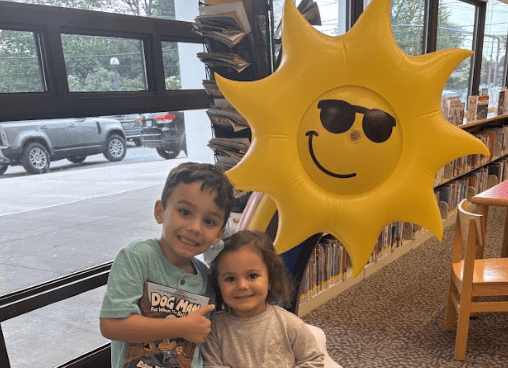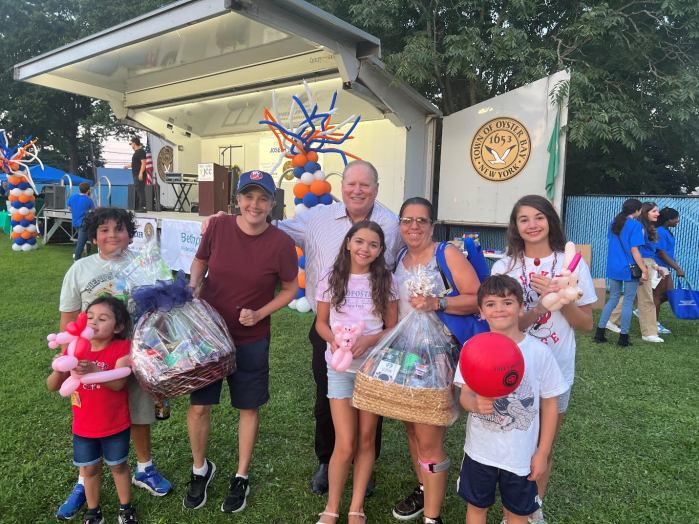 Temple Or Elohim recently built, and filled, a brand new Sukkah to accommodate a marked increase in its membership.
Temple Or Elohim recently built, and filled, a brand new Sukkah to accommodate a marked increase in its membership.
Sukkah is a temporary outdoor structure that is used to eat in and to conduct prayers during the holiday of Sukkot, a Jewish holiday occurring for five days following Yom Kippur—this year, it ran from Sept. 27 to Oct. 4. The holiday marks the 40 years that the Israelites wandered the desert, living in huts, and celebrates the harvest yield of fruits and vegetables that provided sustenance for these people.
Artie Mayer, the temple’s men’s club president, said the new structure was built at a time when most synagogues are dealing with decreasing memberships.
“We’ve experienced a marked increase,” Mayer said of the temple. “It’s running contrary to the downtrend that has befallen other synagogues in this region. It’s why we need to expand the Sukkah.”
 Replacing a Sukkah is no easy task for any synagogue, according to Mayer, and Temple Or Elohim, based in Jericho and serving people from many communities including Plainview-Old Bethpage, looked inward to see if temple members themselves could roll up their sleeves and endure some hard labor.
Replacing a Sukkah is no easy task for any synagogue, according to Mayer, and Temple Or Elohim, based in Jericho and serving people from many communities including Plainview-Old Bethpage, looked inward to see if temple members themselves could roll up their sleeves and endure some hard labor.
“It’s our [the men’s club] responsibility to maintain the Sukkah, so it was up to us to put a plan in place to upgrade or replace the existing one,” said Mayer.
Perhaps fortuitously, Mark Heller, the men’s club executive vice president, is in the display business and knows his way around blueprints and materials suppliers. Mayer said Heller was highly motivated to help create a new, larger Sukkah for the temple.
 “He became the project leader,” said Mayer, who added that multiple members did their part in the construction process. “Dave Berg, besides being a wonderful singer and great guitarist, was also a virtuoso with power tools and became a second cog in the project team. Phil Rubin, a former club president and former temple president, known for his ability to execute major events and keep things organized, joined another former temple president Howard Pastolove and the men’s club rank and file in forming a battalion of committed congregants. Rabbi Harvey Abramowitz and several spouses also contributed to the cause.”
“He became the project leader,” said Mayer, who added that multiple members did their part in the construction process. “Dave Berg, besides being a wonderful singer and great guitarist, was also a virtuoso with power tools and became a second cog in the project team. Phil Rubin, a former club president and former temple president, known for his ability to execute major events and keep things organized, joined another former temple president Howard Pastolove and the men’s club rank and file in forming a battalion of committed congregants. Rabbi Harvey Abramowitz and several spouses also contributed to the cause.”
The newly-constructed Sukkah stretched eight feet wider than its predecessor. Mayer said that based upon the original blueprint, using new wood, bolts, drills, saws and screwdrivers, a skeletal frame was fashioned and then team members joined the front and rear frames together as others placed the side beams into place.
 A lattice-like “roof,” which afforded congregants a nighttime view of the heavens, was put in place across the top. At this point, it was left to the temple’s religious school students, led by education director Deborah Tract and several teachers, to supervise the hanging of holiday-themed crafts from the wood beams and support bars. Finally, men’s club volunteers completed the final decorations just hours before the temple’s Sukkot evening service.
A lattice-like “roof,” which afforded congregants a nighttime view of the heavens, was put in place across the top. At this point, it was left to the temple’s religious school students, led by education director Deborah Tract and several teachers, to supervise the hanging of holiday-themed crafts from the wood beams and support bars. Finally, men’s club volunteers completed the final decorations just hours before the temple’s Sukkot evening service.
“The temple had the structure in place for its brand new, larger Sukkah, all done ‘in house’ by its own congregants,” he said. “People of diverse backgrounds with varying degrees of building skills, united by a commitment to get the job done.”
Mayer said the successful realization of the new Sukkah was the culmination of several months of planning.
 “More important than the actual project, this was an example of people working together in order to further the concept of what I call ‘templehood,’ the notion that the temple is the focal point of a community that may be dispersed across miles but is united by heritage and common beliefs.”
“More important than the actual project, this was an example of people working together in order to further the concept of what I call ‘templehood,’ the notion that the temple is the focal point of a community that may be dispersed across miles but is united by heritage and common beliefs.”

































